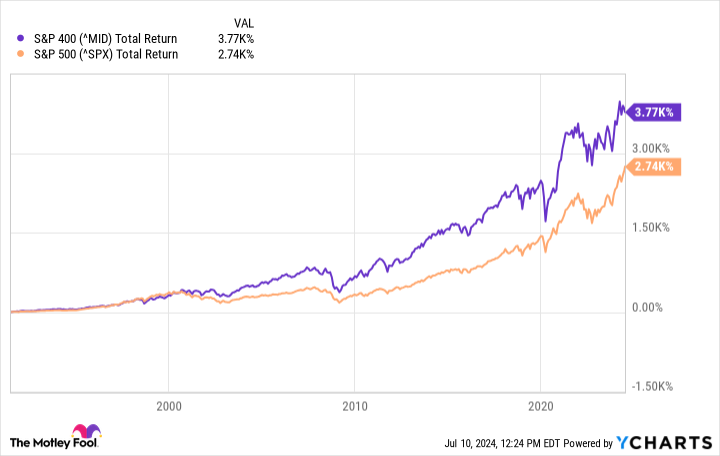ETFs
Comment investir dans le Schwab US Dividend Equity ETF (SCHD)

ETF actions à dividendes américains Schwab (SCHD -0,21 %) permet à quiconque d’investir dans les capacités de création de richesse des actions à dividendes. Au cours des 50 dernières années, les payeurs de dividendes ont généré un rendement total annualisé moyen supérieur à celui des actions à pondération égale Indice S&P 500 (9,2 % contre 7,7 %), avec une volatilité inférieure à celle du marché dans son ensemble. Les entreprises ayant un historique d’augmentation de leurs dividendes ont généré des rendements totaux encore plus élevés (10,2 % annualisés).
Ce fonds négocié en bourse (ETF) se concentre sur les entreprises qui ont fait leurs preuves en matière de versement régulier de dividendes, la plupart d’entre elles augmentant régulièrement leurs versements. Le fonds est une excellente option pour les investisseurs qui cherchent à générer un revenu passif tout en réalisant une certaine appréciation du cours des actions à mesure que la valeur des sociétés sous-jacentes augmente.
Voici tout ce que vous devez savoir sur l’investissement dans le Schwab US Dividend Equity ETF.
Qu’est-ce que c’est?
Qu’est-ce que l’ETF Schwab US Dividend Equity ?
Le Schwab US Dividend Equity ETF vous permet d’investir dans 100 des meilleures actions versant des dividendes par le biais d’un seul fonds. FNB vise à suivre de près l’indice Dow Jones US Dividend 100. L’indice mesure la performance de actions à rendement élevé en dividendes qui opèrent aux États-Unis Ces entreprises versent régulièrement des dividendes et présentent des indicateurs financiers fondamentalement plus solides que leurs pairs.
Comment acheter
Comment acheter le Schwab US Dividend Equity ETF
Toute personne disposant d’un compte de courtage peut acheter le Schwab US Dividend Equity ETF. Le fonds axé sur les dividendes est négocié sur une grande bourse, ce qui vous permet d’acheter des actions même si vous n’avez pas de compte chez Charles Schwab (SCHW -1,25 %). Voici un guide en quatre étapes pour vous montrer comment investir dans les ETF.
Étape 1 : Ouvrir un compte de courtage
Vous devrez ouvrir et financer un compte de courtage avant d’acheter des actions d’un ETF. Si vous devez en ouvrir un, voici quelques-unes des courtiers et plateformes de trading les mieux notésPrenez votre temps pour rechercher les courtiers afin de trouver celui qui vous convient le mieux.
Comme il s’agit d’un ETF sponsorisé par Schwab, incluez Charles Schwab dans vos recherches pour voir s’il pourrait être un bon courtier pour votre situation. Vous devrez également sélectionner un courtier qui vous permet d’acheter et de vendre des ETF sponsorisés par Schwab.
Étape 2 : Déterminez votre budget
Avant de réaliser votre première transaction, vous devez déterminer le budget que vous souhaitez investir. Vous devrez ensuite déterminer comment répartir cet argent. La philosophie d’investissement de Motley Fool recommande de construire un portefeuille diversifié de 25 actions ou plus que vous prévoyez de conserver pendant au moins cinq ans.
Ainsi, si vous disposez de 10 000 $, vous souhaiterez investir environ 400 $ dans 25 titres différents. Cependant, les ETF comme le Schwab US Dividend Equity ETF offrent une diversification instantanée (il détient 100 sociétés dans presque tous les secteurs du marché boursier). Compte tenu de cette diversification intégrée, vous pourriez allouer une part beaucoup plus importante de votre portefeuille à cet ETF.
Étape 3 : Faites vos recherches
Vous devez soigneusement recherche tout investissement potentiel avant d’engager votre argent. Lors de l’analyse d’un ETF, vous devez examiner sa stratégie, ses avoirs, son ratio de frais et ses performances historiques et les comparer à meilleurs ETF à acheter.
Ratio de dépenses
Un pourcentage des actifs d’un fonds commun de placement ou d’un FNB déduit chaque année pour couvrir les frais de gestion, d’exploitation et d’administration.
Étape 4 : Passer une commande
Une fois que vous avez ouvert et financé un compte de courtage, défini votre budget d’investissement et étudié l’investissement, il est temps d’acheter des actions. Le processus est relativement simple. Accédez à la page de commande de votre compte de courtage et remplissez toutes les informations pertinentes, notamment :
- Le nombre d’actions que vous souhaitez acheter ou le montant que vous souhaitez investir pour acheter actions fractionnaires.
- Le symbole boursier (SCHD pour Schwab US Dividend Equity ETF).
- Que vous souhaitiez placer un ordre à cours limité ou ordre au marchéThe Motley Fool recommande d’utiliser un ordre au marché car il vous garantit d’acheter immédiatement des actions au prix du marché.
Une fois la page de commande complétée, cliquez pour soumettre votre transaction et ajouter la haute qualité ETF à dividendes à votre portefeuille.
Source de l’image : Getty Images.
Fonds
Titres détenus par le Schwab US Dividend Equity ETF
Le Schwab US Dividend Equity ETF est un géré passivement fonds qui reflète les avoirs de l’indice Dow Jones US Dividend 100. L’indice suit environ 100 actions à dividendes connu pour verser régulièrement des dividendes soutenus par des profils financiers de haute qualité. Le Schwab US Dividend Equity ETF comptait 103 positions à la mi-2024, menées par :
- Systèmes Cisco (CSCO -0,09%) : 4,1% des avoirs du fonds.
- Home Dépôt (HD 0,28%) : 4,1%.
- Texas Instruments (TxN -0,07%) : 4%
- Chevron (CVX -1,53%) : 4%.
- Amgen (AMGN 0,48%) : 4%.
Les 10 principaux titres du fonds représentent environ 40 % de son actif net. L’ETF offre une diversification assez large secteurs boursiers:
- Finances : 17,4% de la valeur du portefeuille
- Soins de santé: 15,7%
- Biens de consommation de base : 13,9%
- Industriels : 13,5%
- Énergie: 12,8%
- Biens de consommation discrétionnaires : 10,1%
- Informatique: 8,7%
- Services de communication: 4,7%
- Matériaux: 3,1%
- Utilitaires : 0,03%
Dois-je investir ?
Dois-je investir dans le Schwab US Dividend Equity ETF ?
Investir est une démarche très personnelle. Toutes les actions et tous les fonds ne sont pas adaptés à votre situation. Dans cette optique, voici quelques raisons pour lesquelles vous pourriez vouloir investir dans le Schwab US Dividend Equity ETF :
- Vous voulez collectionner revenu passif.
- Vous aimeriez obtenir un rendement de revenu plus élevé que celui que vous pouvez obtenir avec un Fonds indiciel S&P 500.
- Vous souhaitez investir dans un portefeuille diversifié d’actions à dividendes de haute qualité et à rendement élevé.
- Tu ne veux pas être un sélectionneur d’actions actif et gérer un portefeuille d’actions à dividendes.
- Vous êtes prêt à échanger le potentiel contre un prix inférieur Rendements totaux pour des revenus plus élevés et moins de volatilité.
D’autre part, voici quelques raisons pour lesquelles le Schwab US Dividend Equity ETF pourrait ne pas être le meilleur ETF à acheter pour toi:
- Vous recherchez un investissement davantage axé sur la croissance.
- Vous voulez un revenu fixe flux.
- Vous souhaitez un rendement de revenu encore plus élevé.
- Vous préféreriez investir directement dans des actions à dividendes.
- Vous possédez déjà de nombreuses actions à dividendes.
Dividendes
L’ETF Schwab US Dividend Equity verse-t-il un dividende ?
Oui, le Schwab US Dividend Equity ETF verse un dividende. À la mi-2024, le fonds avait un rendement sur 12 mois glissants rendement des dividendes de 3,4 %, soit plus du double du rendement des dividendes du S&P 500 (environ 1,3 %). Le rendement des dividendes plus élevé permet aux investisseurs de percevoir davantage de revenus de dividendes chaque année, leur offrant ainsi un rendement de base plus élevé.
Le fonds distribue des revenus de dividendes aux investisseurs chaque trimestre. Les paiements augmentent et diminuent en fonction des revenus de dividendes générés par le portefeuille du fonds, moins son ratio de frais. Bien que les paiements aient tendance à fluctuer d’un trimestre à l’autre, ils ont régulièrement augmenté au fil des ans, car les sociétés du fonds ont augmenté leurs dividendes :
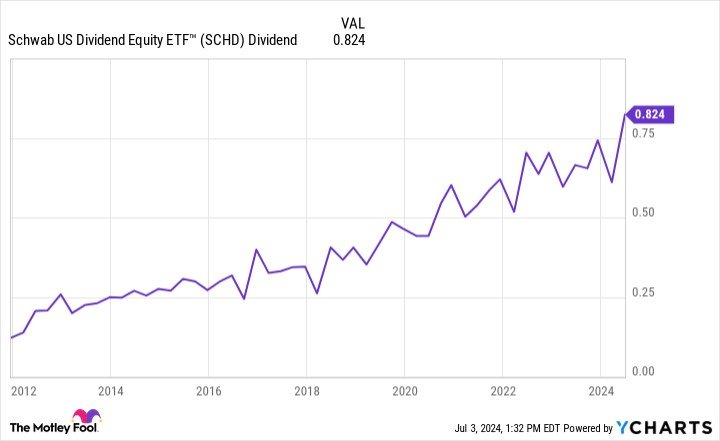
Source de l’image : Ychart.
Ratio de dépenses
Quel est le ratio de frais du Schwab US Dividend Equity ETF ?
Les sponsors d’ETF comme Schwab facturent des frais appelés ratios de frais pour gérer les fonds au nom de leurs investisseurs. L’ETF Schwab US Dividend Equity a un ratio de frais ETF de 0,06 %. Il s’agit d’un ratio de frais très faible pour un ETF à gestion passive ; la moyenne du secteur est d’environ 0,16 %.
Ratio de frais ETF
Frais annuels exprimés en pourcentage des actifs qu’un fonds négocié en bourse facture aux investisseurs pour les coûts de gestion et d’exploitation.
Par exemple, un investissement de 10 000 $ dans le Schwab US Dividend Equity ETF entraînerait des frais de gestion de 6 $ par an, soit environ 10 $ de moins que d’autres fonds à gestion passive. Le ratio de frais plus faible du fonds permet aux investisseurs de conserver une plus grande partie des revenus de dividendes générés par les avoirs du FNB. Même si cela peut sembler peu au premier abord, cela s’accumule au fil du temps.
Dossier historique
Performance historique du Schwab US Dividend Equity ETF
Les actions à dividendes ont tendance à offrir des rendements solides sur le long terme. Cela a certainement été le cas pour le Schwab US Dividend Equity ETF au fil des ans :
|
Dividende Schwab US |
17,06% |
4,20% |
13,37% |
10,99% |
|
Référence |
22,47% |
6,25% |
11,40% |
8,72% |
Comme le montre ce tableau, le fonds a surperformé son indice de référence au cours des cinq et dix dernières années. Cependant, bien qu’il ait surperformé son indice de référence, le fonds a sous-performé par rapport au S&P 500 (rendement total annualisé de 15 % au cours des cinq dernières années et de 12,9 % au cours de la dernière décennie).
Même si le fonds est à la traîne par rapport au marché général, il offre aux investisseurs des revenus plus élevés et des rendements moins volatils. Ces caractéristiques peuvent en faire une option solide pour les investisseurs à la recherche d’un fonds axé sur le revenu qui peut néanmoins générer des rendements totaux solides.
Sujets d’investissement connexes
Le bilan du Schwab US Dividend Equity ETF
Le Schwab US Dividend Equity ETF facilite l’investissement dans des actions à dividendes de haute qualité. Le fonds détient des actions de 100 sociétés connues pour leur capacité à verser des dividendes réguliers et en constante augmentation. Il peut fournir un portefeuille instantanément diversifié d’actions à dividendes de haute qualité qui peuvent constituer un actif de base de tout portefeuille d’investissement.
FAQ
Questions fréquentes sur l’investissement dans le Schwab US Dividend Equity ETF
Comment investir dans l’ETF SCHD
angle vers le bas angle vers le haut
Tout le monde peut investir dans le Schwab US Dividend Equity ETF (SCHD). Le fonds est négocié en bourse sur une grande place boursière, ce qui permet à toute personne disposant d’un compte de courtage d’acheter des actions. Pour investir dans l’ETF, vous devez ouvrir la page de commande de votre compte de courtage et remplir toutes les informations pertinentes, notamment :
- Le nombre d’actions que vous souhaitez acheter ou le montant que vous souhaitez investir pour acheter des actions fractionnaires
- Le symbole boursier (SCHD pour Schwab US Dividend Equity ETF)
- Que vous souhaitiez passer un ordre à cours limité ou un ordre au marché
Vérifiez votre commande, puis cliquez sur Soumettre pour ajouter cet ETF à dividendes à votre portefeuille.
Le Schwab US Dividend Equity ETF est-il un bon investissement ?
angle vers le bas angle vers le haut
Le Schwab US Dividend Equity ETF peut être un bon investissement. Au cours de la dernière décennie, le fonds a généré un rendement total annualisé de 11 %, ce qui correspond à peu près au rendement de l’indice Dow Jones US Dividend 100 (rendement total annuel moyen de 11,1 %).
Elle a surperformé la moyenne des actions de grande capitalisation (rendement total annualisé de 8,7 %), mais a été à la traîne par rapport au S&P 500 au cours de cette période (rendement total annualisé de 12,9 %).
Ce FNB peut être un bon investissement pour ceux qui recherchent des revenus et des rendements similaires à ceux des actions avec une volatilité inférieure à celle du marché en général. Ses caractéristiques le rendent idéal pour les personnes à la retraite ou proches de la retraite ou qui recherchent un placement à faible volatilité et axé sur les revenus pour diversifier leur portefeuille et réduire les risques.
Combien SCHD verse-t-il en dividendes par mois ?
angle vers le bas angle vers le haut
Le Schwab US Dividend Equity ETF (SCHD) verse des dividendes trimestriels. À la mi-2024, les quatre dernières distributions étaient les suivantes :
- 1er juillet 2024 : 0,8241 $ par action
- 25 mars 2024 : 0,6110 $ par action
- 11 décembre 2023 : 0,7423 $ par action
- 25 septembre 2023 : 0,6545 $ par action
Le paiement varie en fonction des dividendes que le fonds reçoit de ses avoirs chaque trimestre. Ses paiements au cours des 12 derniers mois ont donné au fonds un rendement de dividende glissant de 3,4 %.
Quelles sociétés font partie du Schwab US Dividend Equity ETF ?
angle vers le bas angle vers le haut
À la mi-2024, le Schwab US Dividend Equity ETF détenait des actions de plus de 100 sociétés. Les titres du fonds avaient tendance à verser des dividendes à rendement plus élevé, en constante augmentation. Les cinq plus grandes participations du fonds étaient Cisco, Home Depot, Texas Instruments, Chevron et Amgen.
Charles Schwab est un partenaire publicitaire de The Ascent, une société Motley Fool. Matt DiLallo a des positions dans Chevron et Home Depot. The Motley Fool a des positions dans et recommande Charles Schwab, Chevron, Cisco Systems, Home Depot et Texas Instruments. The Motley Fool recommande Amgen. The Motley Fool a une politique de divulgation.
Source
ETFs
Missed the Bull Market Resumption? 3 ETFs to Help You Build Wealth for Decades
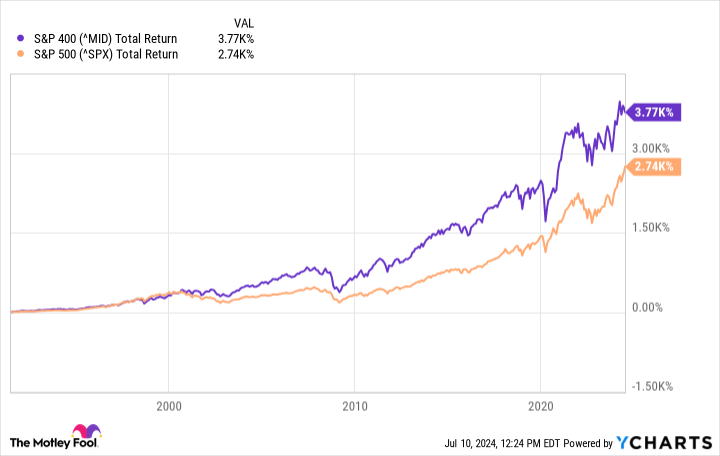
The market’s rebound from the 2022 bear market was not only unexpected. It was also bigger than expected. S&P 500 The stock price is up 60% from the bear market low, despite no clear signs at the time that such a rally was in the works. Chances are you missed at least part of this current rally.
If so, don’t be discouraged: you’re in good company. You’re also far from financially ruined. While you can’t go back and make up for the missed opportunity, for long-term investors, the growth potential is much greater.
If you want to make sure you don’t miss the next big bull run, you might want to tweak your strategy a bit. This time around, you might try buying fewer stocks and focusing more on exchange traded funds (or ETFs), which are often easier to hold when things get tough for the overall market.
With that in mind, here’s a closer look at three very different ETFs to consider buying that could – collectively – complement your portfolio brilliantly.
Let’s start with the basics: dividend growth
Most investors naturally favor growth, choosing growth stocks to achieve that goal. And the strategy usually works. However, most long-term investors may not realize that they can get the same type of net return with boring dividend stocks like the ones held in the portfolio. Vanguard Dividend Appreciation ETF (NYSEMKT: VIG) which reflects the S&P US Dividend Growth Index.
As the name suggests, this Vanguard fund and its underlying index hold stocks that not only pay consistent dividends, but also have a history of consistently increasing dividends. To be included in the S&P US Dividend Growers Index, a company must have increased its dividend every year for at least the past 10 years. In most cases, however, they have been doing so for much longer.
The ETF’s current dividend yield of just under 1.8% isn’t exactly exciting. In fact, it’s so low that investors might wonder how this fund is keeping up with the broader market, let alone growth stocks. What’s being grossly underestimated here is the sheer magnitude of these stocks. dividend growthOver the past 10 years, its dividend per share has nearly doubled, and more than tripled from 15 years ago.
The reason is that solid dividend stocks generally outperform their non-dividend-paying counterparts. Calculations by mutual fund firm Hartford indicate that since 1973, S&P 500 stocks with a long history of dividend growth have averaged a single-digit annual return, compared with a much more modest 4.3% annual gain for non-dividend-paying stocks, and an average annual return of just 7.7% for an equal-weighted version of the S&P 500. The numbers confirm that there’s a lot to be said for reliable, consistent income.
The story continues
Then add capital appreciation through technology
That said, there’s no particular reason why your portfolio can’t also hold something a little more volatile than a dividend-focused holding. If you can stomach the volatility that’s sure to continue, take a stake in the Invesco QQQ Trust (NASDAQ: QQQ).
This Invesco ETF (often called the “cubes” or the triple-Q) is based on the Nasdaq-100 index. Typically, this index consists of 100 of the Nasdaq Composite IndexThe index is one of the largest non-financial indices at any given time. It is updated quarterly, although extreme imbalance situations may result in unplanned rebalancing of the index.
That’s not what makes this fund a must-have for many investors, though. It turns out that most high-growth tech companies choose to list their shares through the Nasdaq Sotck exchange rather than other exchanges like the New York Stock Exchange or the American Stock ExchangeNames like Apple, MicrosoftAnd Nvidia are not only Nasdaq-listed securities. They are also the top holdings of this ETF, with Amazon, Meta-platformsand Google’s parent company AlphabetThese are of course some of the highest-yielding stocks on the market in recent years.
This won’t always be the case. Just as companies like Nvidia and Apple have squeezed other names out of the index to make room for their stocks, these current names could also be replaced by other names (although it will likely be a while before that happens). It’s the proverbial life cycle of the market.
This shift, however, will likely be driven by technology companies that are offering revolutionary products and services. Owning a stake in the Invesco QQQ Trust is a simple, low-cost way to ensure you’re invested in at least most of their stocks at the perfect time.
Don’t forget indexing, but try a different approach
Finally, while Triple-Q and Vanguard Dividend Appreciation funds are smart ways to diversify your portfolio over the long term, the good old indexing strategy still works. In other words, rather than risk underperforming the market by trying to beat it, stick to tracking the long-term performance of a broad stock index.
Most investors will opt for something like the SPDR S&P 500 Exchange Traded Fund (NYSEMKT:SPY), which of course mirrors the large-cap S&P 500 index. And if you already own one, great: stick with it.
If and when you have some spare cash to put to good use, consider starting a mid-cap funds as the iShares Core S&P Mid-Cap ETF (NYSEMKT: IJH) instead. Why? Because you’ll likely get better results with this ETF than you will with large-cap index funds. Over the past 30 years, S&P 400 Mid-Cap Index significantly outperformed the S&P 500.
^MID Chart
The disparate degree of gains actually makes sense. While no one disputes the solid foundations on which most S&P 500 companies are built, they are in many ways victims of their own size: It’s hard to get bigger when you’re already big. This is in contrast to the mid-cap companies that make up the S&P 400 Mid Cap Index. These organizations have moved past their rocky, shaky early years and are just entering their era of high growth. Not all of them will survive this phase, but companies like Advanced microsystems And Super microcomputer Those that survive end up being incredibly rewarding to their patient shareholders.
Should You Invest $1,000 in iShares Trust – iShares Core S&P Mid-Cap ETF Right Now?
Before purchasing shares of iShares Trust – iShares Core S&P Mid-Cap ETF, consider the following:
The Motley Fool Stock Advisor analyst team has just identified what they believe to be the 10 best stocks Investors should buy now…and the iShares Trust – iShares Core S&P Mid-Cap ETF wasn’t one of them. The 10 stocks selected could generate monstrous returns in the years to come.
Consider when Nvidia I made this list on April 15, 2005… if you had $1,000 invested at the time of our recommendation, you would have $791,929!*
Stock Advisor provides investors with an easy-to-follow blueprint for success, including portfolio construction advice, regular analyst updates, and two new stock picks each month. The Stock Advisor service offers more than quadrupled the return of the S&P 500 since 2002*.
*Stock Advisor returns as of July 8, 2024
John Mackey, former CEO of Amazon’s Whole Foods Market, is a member of The Motley Fool’s board of directors. Randi Zuckerberg, former director of market development and spokesperson for Facebook and sister of Meta Platforms CEO Mark Zuckerberg, is a member of The Motley Fool’s board of directors. Suzanne Frey, an executive at Alphabet, is a member of The Motley Fool’s board of directors. James Brumley has positions in Alphabet. The Motley Fool has positions in and recommends Advanced Micro Devices, Alphabet, Amazon, Apple, Meta Platforms, Microsoft, Nvidia, and Vanguard Specialized Funds – Vanguard Dividend Appreciation ETF. The Motley Fool recommends Nasdaq and recommends the following options: long January 2026 $395 calls on Microsoft and short January 2026 $405 calls on Microsoft. The Motley Fool has a position in Advanced Micro Devices, Alphabet, Amazon, Apple, Meta Platforms, Microsoft, Nvidia, and Vanguard Specialized Funds – Vanguard Dividend Appreciation ETF. The Motley Fool recommends Nasdaq and recommends the following options: long January 2026 $395 calls on Microsoft and short January 2026 $405 calls on Microsoft. disclosure policy.
Missed the Bull Market Resumption? 3 ETFs to Help You Build Wealth for Decades was originally published by The Motley Fool
ETFs
This Simple ETF Could Turn $500 a Month Into $1 Million

This large-cap ETF offers investors the potential for above-market returns while minimizing risk.
It’s always inspiring to hear stories of people who invested in a company and made tons of money as the company grew and became successful. While these stories are a testament to the power of investing, they can also be misleading. That’s not because it doesn’t happen often, but because you don’t have to make a big splash on a single company to make a lot of money in the stock market.
Invest regularly in exchange traded funds (AND F) is a great way to build wealth. ETFs allow you to invest in dozens, hundreds, and sometimes thousands of companies in a single investment. For investors looking for an ETF that can help them become millionaires, look no further than the Vanguard Growth ETFs (VUG 0.61%).
A history of outperforming the market
Since its launch in January 2004, this ETF has outperformed the market (based on S&P 500 Back), with an average total return of around 11.6%. The returns are even more impressive when looking back over the past decade, with the ETF posting an average total return of around 15.7%.
Total VUG Performance Level data by YCharts
The ETF’s past success doesn’t mean it will continue on this path, but for the sake of illustration, let’s take a middle ground and assume it averages about 13% annual returns over the long term. Averaging those returns, monthly investments of $500 could top the $1 million mark in just over 25 years.
Assuming (emphasis on the word “assume”) that the ETF continues to generate an average total return of 15.7% over the past decade, investing $500 a month could get you past $1 million in about 23 years. At an annual return of 11.6%, that would take nearly 28 years.
There is no way to predict the future performance of the ETF, but the most important thing is the power of time and Compound profit. Earning $1 million by saving alone is a difficult and unachievable task for most people. However, it becomes much more achievable if you give yourself time and make regular investments, no matter how small.
So why choose the Vanguard Growth ETF?
This ETF can offer investors the best of both worlds. On the one hand, since it only contains large cap stocksIt offers more stability and less volatility than you typically find with smaller growth stocks. At the other end, the focus on growth means it is built with the goal of outperforming the market.
Investing involves a tradeoff between risk and return, and this ETF falls somewhere in the middle for the most part. That’s not just because it only contains large-cap stocks. It’s also because large-cap stocks are leading the way. Here are the ETF’s top 10 holdings:
- Microsoft: 12.60%
- Apple: 11.51%
- Nvidia: 10.61%
- Alphabet (both share classes): 7.54%
- Amazon: 6.72%
- Meta-platforms: 4.21%
- Eli Lilly: 2.88%
- You’re here: 1.98%
- Visa: 1.72%
The Vanguard Growth ETF is not as diversified as other broad ETFs, with the top 10 holdings making up nearly 60% of the fund and the “The Magnificent Seven” with stocks accounting for about 55%. However, many of these companies (particularly mega-cap technology stocks) have been among the best performers in the stock market over the past decade and still have great growth opportunities ahead of them.
MSFT Total Return Level data by YCharts
Big tech stocks are expected to continue to see growth in areas such as cloud computing, artificial intelligenceand cybersecurity; Eli Lilly will benefit from advances in biotechnologyTesla is one of the leaders in electric vehicles, which are still in the early stages of development; and Visa is expected to be one of the forerunners as the world moves toward more digital payments.
ETF concentration adds risk, especially if Microsoft, Apple or Nvidia is experiencing a slowdownBut these companies are well positioned to drive long-term growth despite any short-term setbacks that may arise. Consistent investments over time in the Vanguard Growth ETF should pay off for investors.
Randi Zuckerberg, former head of market development and spokesperson for Facebook and sister of Meta Platforms CEO Mark Zuckerberg, is a member of The Motley Fool’s board of directors. Suzanne Frey, an executive at Alphabet, is a member of The Motley Fool’s board of directors. John Mackey, former CEO of Whole Foods Market, an Amazon subsidiary, is a member of The Motley Fool’s board of directors. Stefon Walters has positions in Apple and Microsoft. The Motley Fool has positions in and recommends Alphabet, Amazon, Apple, Meta Platforms, Microsoft, Nvidia, Tesla, Vanguard Index Funds-Vanguard Growth ETF, and Visa. The Motley Fool recommends the following options: long January 2026 $395 calls on Microsoft and short January 2026 $405 calls on Microsoft. The Motley Fool has a position in shares of Apple and Microsoft. disclosure policy.
ETFs
Ethereum ETFs Could Bring in $1 Billion a Month

In a recent interview with Bloomberg, Kraken’s chief strategy officer Thomas Perfumo predicted that Ethereum ETFs could attract between $750 million and $1 billion in monthly investments.
“Market sentiment is being priced in. I think the market has priced in something like $750 million to $1 billion of net inflows into Ethereum ETF products each month,” Perfumo said.
In the interviewPerfumo noted that if inflows exceed expectations, it could provide strong support to the industry and potentially drive Ethereum to new record highs.
This creates positive support for the industry, if we go beyond that, note that Bitcoin was at a rate above $2.5 billion
He said
Moreover, the hype around Ethereum ETFs has already sparked some optimism among investors. After the SEC approved the 19b-4 filing, Ethereum’s price jumped 22%, attracting investment into crypto assets.
This price movement shows how sensitive the market is to regulatory changes and the growth potential once ETFs are approved.
Perfumo also highlighted other factors supporting current market sentiment, including the upcoming US elections and a potential interest rate cut by the Federal Reserve. Recent US CPI data suggests disinflation on a monthly and annual basis, with some traditional firms predicting rate cuts as early as September.
These broader economic factors, combined with developments in the crypto space, are shaping the overall market outlook.
Regarding Kraken’s strategy, Perfumo highlighted the exchange’s goal of driving cryptocurrency adoption through strategic initiatives. When asked about rumors of Kraken going public, he reiterated that the company’s intention is instead to broaden cryptocurrency adoption.
Read also : Invesco, Galaxy Cut Ether ETF Fees to 0.25% in Competitive Market
ETFs
Kraken Executive Expects Ethereum ETF Launch to “Lift All Boats”

Kraken Chief Strategy Officer Thomas Perfumemo said: Ethereum ETFs (ETH) could help the crypto sector while commenting on political developments in the United States.
On July 12, Perfumo told Bloomberg that spot Ethereum ETFs would attract capital flows while drawing attention to crypto, noting:
“It’s a rising tide, which lifts the whole history of the boat.”
Perfumo further explained that the final value of Ethereum “depends on the Ethereum ETF.”
He said the cryptocurrency market is “pricing in” between $750 million and $1 billion in net inflows into Ethereum products on a monthly basis, which would imply that Ethereum could reach all-time highs between $4,000 and $5,000.
Perfumo also compared expectations to Bitcoin’s all-time high in March, which he called a “silent spike” that occurred without any evidence of millions of new investors entering the industry.
Political evolution
Perfumo also commented on political developments. At the beginning of the interview, he said that the results of the US elections “will set the tone for policymaking and the legislative agenda for the next four years.”
He also stressed the importance of legislative action and clarity and noted that recent developments show bipartisan support in Congress.
The House recently voted to pass the Financial Innovation and Technology for the 21st Century Act (FIT21) and attempted to repeal controversial SEC accounting rules with the Senate. However, the president Joe Biden Chosen to veto The resolution.
Perfume said:
“Even if you encounter obstacles at the executive level, [there’s] “There is still good progress to come.”
He added that the Republican Party appears “more pro-crypto.” [and] “more progressive” on the issue, noting Donald Trump plans to attend the Bitcoin Conference in Nashville.
Trump has also made numerous statements in support of pro-crypto policy, including at recent campaign events in Wisconsin And San Francisco.
Mentioned in this article
-
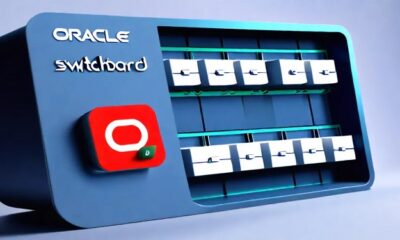
 DeFi1 year ago
DeFi1 year agoSwitchboard Revolutionizes DeFi with New Oracle Aggregator
-

 News1 year ago
News1 year agoLatest Business News Live Updates Today, July 11, 2024
-

 DeFi1 year ago
DeFi1 year agoIs Zypto Wallet a Reliable Choice for DeFi Users?
-

 DeFi1 year ago
DeFi1 year ago👀 Lido prepares its response to the recovery boom
-

 Fintech1 year ago
Fintech1 year agoFinTech LIVE New York: Mastercard and the Power of Partnership
-

 DeFi1 year ago
DeFi1 year agoEthena downplays danger of letting traders use USDe to back risky bets – DL News
-

 Fintech1 year ago
Fintech1 year ago121 Top Fintech Companies & Startups To Know In 2024
-
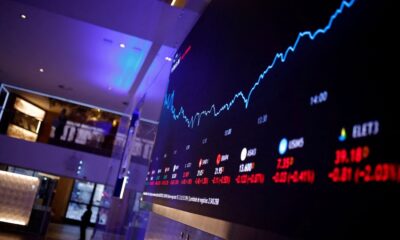
 ETFs1 year ago
ETFs1 year agoGold ETFs see first outing after March 2023 at ₹396 cr on profit booking
-

 Fintech1 year ago
Fintech1 year agoFintech unicorn Zeta launches credit as a UPI-linked service for banks
-

 DeFi1 year ago
DeFi1 year agoTON Network Surpasses $200M TVL, Boosted by Open League and DeFi Growth ⋆ ZyCrypto
-
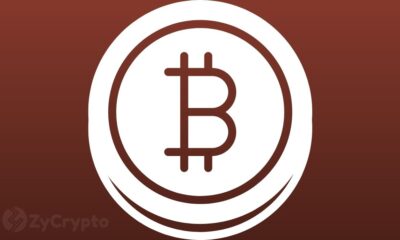
 ETFs1 year ago
ETFs1 year agoLargest US Bank Invests in Spot BTC ETFs While Dimon Remains a Bitcoin Hater ⋆ ZyCrypto
-

 News1 year ago
News1 year agoSalesforce Q1 2025 Earnings Report (CRM)

